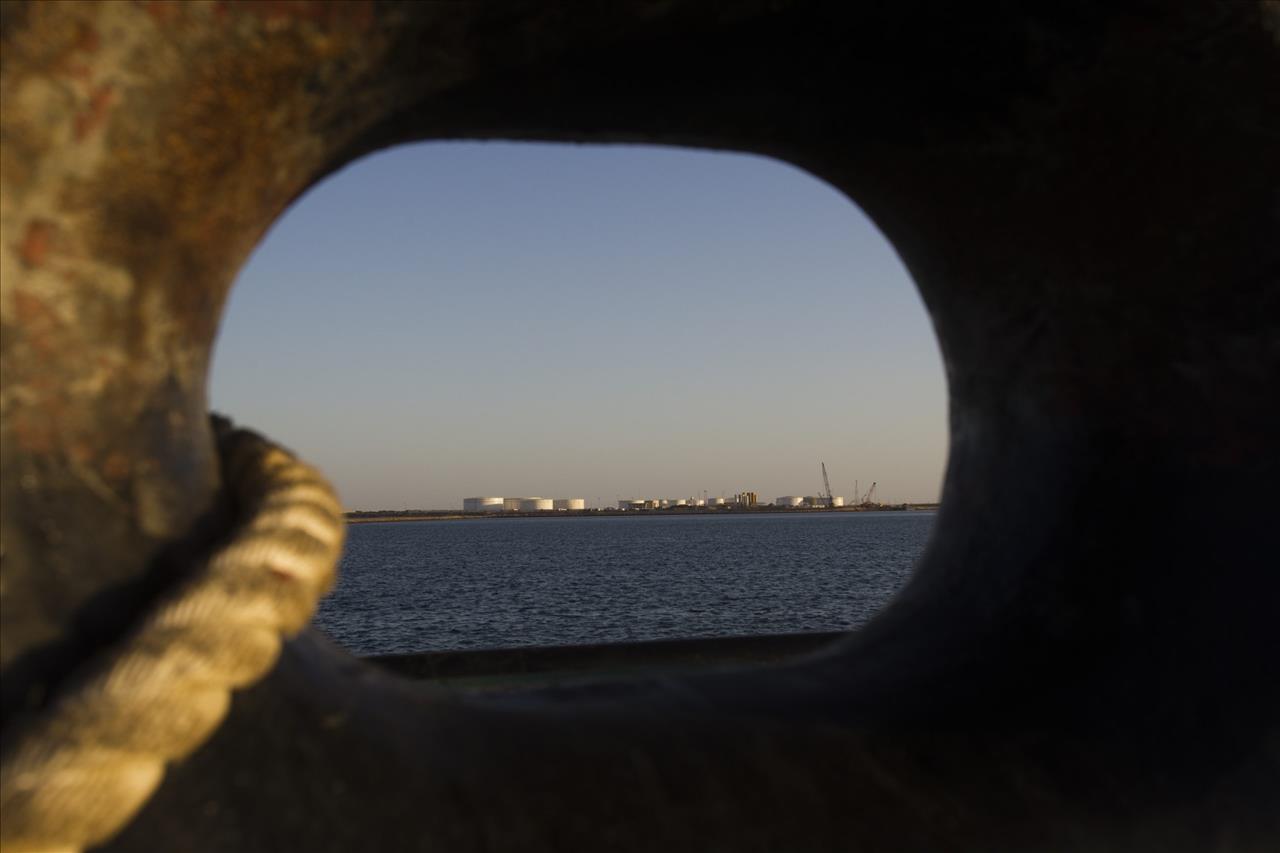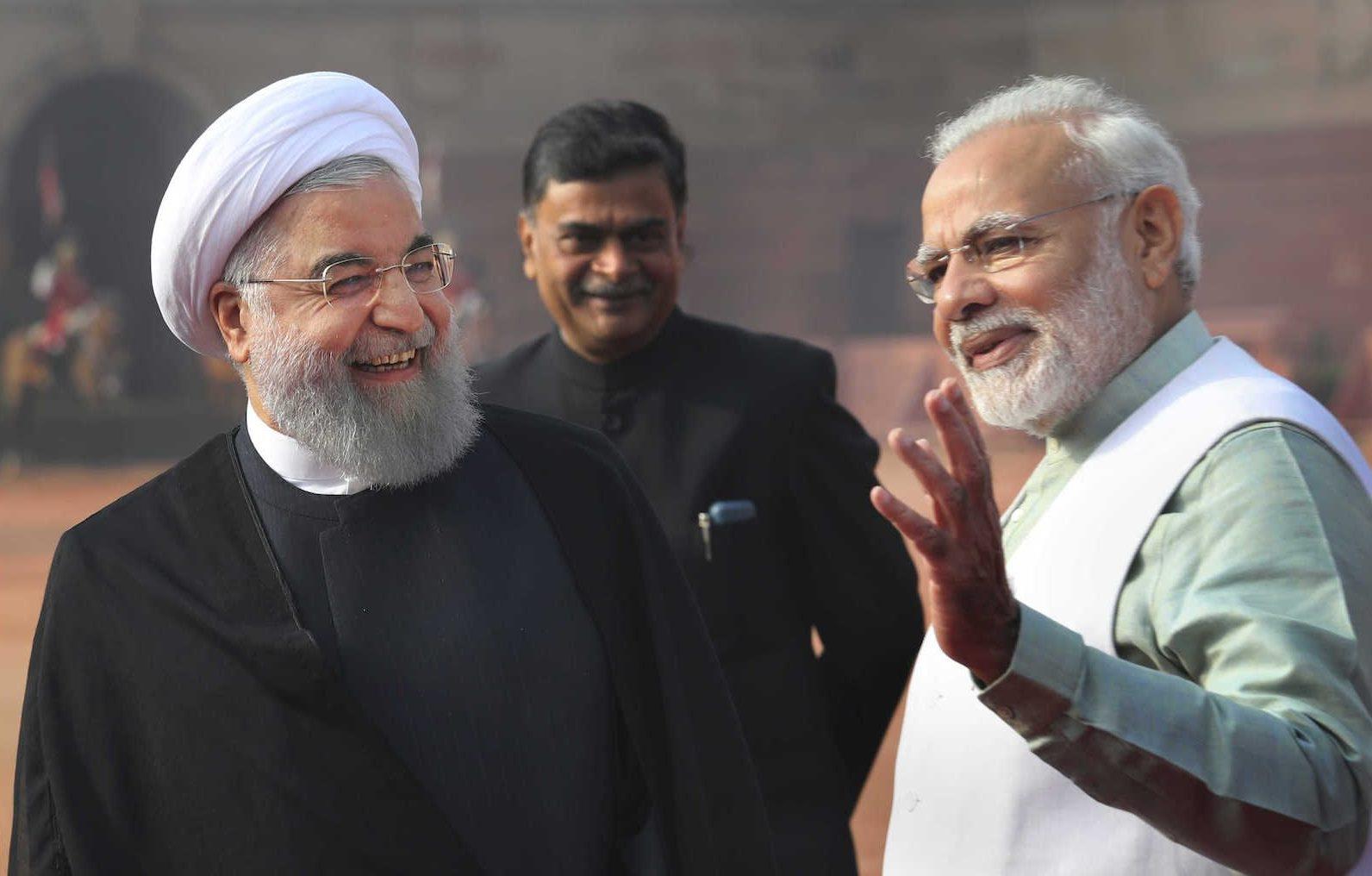
India has key first-mover edge on China in Iran
(MENAFN- Asia Times) PESHAWAR – When China clinched a massive $400 billion bilateral investment pact with Iran, a 25-year deal that seeks to revive the heavily sanctioned and economically isolated nation, few noted that India was already well-engaged.
By the end of May, India will begin full-scale operations in its first foreign port venture at Iran's Chabahar, a facility that opens on the Gulf of Oman that will aim to facilitate more South Asia, Central Asia and Middle East trade while bypassing Pakistan.
India's US$500 million investment represents a clear and potent commercial challenge to China's massive port investment in neighboring Pakistan's Gwadar, a key component of Beijing's Belt and Road Initiative (BRI).
It's not immediately clear how the new China-Iran deal will work, if at all, to develop Iran's trade and port infrastructure as the precise terms of the bilateral partnership have not been made public.
If it does, India will have a distinct first-mover advantage through its nearly completed development of two terminals at Chahabar's Shahid Beheshti complex that opens onto the Gulf of Oman.
The 10-year lease agreement, a deal first clinched by Prime Minister Narendra Modi in Tehran in 2016, has until now been hobbled by US sanctions imposed under the Donald Trump administration.
Indian suppliers and engineers, some with interests in the US, were reluctant to deliver essential machinery and services to Iran on fears they could somehow be sanctioned, despite clear exemptions on Chabahar in Trump's sanction order. That led to certain speculation that China may take over the project from India.
But New Delhi has doubled down and accelerated the project with the shift from Trump to Biden, banking like others on a new breakthrough on the Joint Comprehensive Plan of Action (JCPOA) nuclear agreement and a broader US-Iran warming trend.
'I will inaugurate the fully operationalized Chabahar port in April or May,' Mansukh Mandaviya, India's ports and shipping minister, said in a recent virtual discussion on Iran's Chabahar port.

Aerial view of Iran's Chabahar port. Image: Twitter
India has supplied two large cargo-moving cranes and will deliver two more in the coming weeks before the facility's expected ceremonial opening next month.
New Delhi is already promoting the port's potential humanitarian role, noting it was used to send emergency shipments of wheat to Afghanistan during the Covid-19 crisis and pesticide to Iran to deal with a recent locust infestation.
India's renewed commitment to Iran via Chabahar is already setting alarm bells ringing in neighboring Pakistan, which is already losing regional trade mainly from Afghanistan to Iran despite US sanctions.
India and Pakistan recently announced a renewed commitment to an existing 2003 ceasefire over contested Kashmir, a move that should allow both to focus more on economic linkages than strategic rivalry.
Chabahar has seen limited operations since 2019, a result of US restrictions imposed on Iran's energy exports. The port handled a mere 123 vessels with 1.8 million tons of bulk and general cargo from February 2019 to January 2021, well below its operating capacity, according to reports.
That's set to change. New Delhi ultimately aims to link Chabahar to its International North-South Transport Corridor (INSTC), a project initially proposed by India, Russia and Iran in 2000 and later joined by 10 other Central Asian nations.
Some see the INSTC as a less-monied rival to China's BRI, which has invested heavily in Pakistan's road, power and trade infrastructure, including huge multi-billion dollar investments at Gwadar port some critics have likened to a debt trap.
Security concerns sparked by armed groups in Pakistan's Balochistan province, where Gwadar is situated, have hindered progress on various BRI projects and pushed Pakistan to recently ramp up security at the Beijing-invested port.

INSTC envisions a 7,200 kilometer-long, multimode network comprised of shipping, rail and road links connecting India's Mumbai with Europe via Moscow and Central Asia. Initial estimates suggest INSTC could cut current carriage costs by about 30% and travel times by half.
That means more trade and port activity for Iran and less for Pakistan, according to industry experts. The Asian Development Bank (ADB) claimed last year that Iran has already usurped 70% of Pakistan's recent transport business at Karachi port.
An ADB Corridor Performance Measurement and Monitoring (CPMM) report published in June last year painted a grim picture of Pakistani ports' potential to handle bulk transit loads, due mainly to poor road transportation infrastructure.
The ADB report further added that although landlocked Afghanistan has traditionally relied on Pakistan as its gateway to international shipping routes, recent trends indicate that as much as 70% of Afghan transit trade is now handled by Iran.
Khan Jan Alkozai, co-chairman of the Afghan chapter of the Pakistan Afghanistan Joint Chamber of Commerce and Industry (PAJCCI), told Asia Times that if India presses ahead as planned with INSTC, Pakistan would be the ultimate loser as Afghan and Central Asian transport business diverts increasingly to Chabahar and away from Karachi and Gwadar.
'Iran had already started working on a 600-kilometer-long railway line connecting Chabahar port to Zahedan, the provincial capital of Sistan-Baluchestan province close to the Afghan border,' he said.
He noted that India has already lined up $1.6 billion for the project to facilitate the movement of goods to and from Afghanistan via Iran. India, he said, also plans to invest $2 billion to develop supporting infrastructure including the Chabahar-Hajigak railway line in Afghanistan.
Those plans will put added pressure on the already squeezed US-brokered Afghan Pakistan Transit Trade Agreement (APTTA) 2010, which expired in February this year.

Trucks lined up on the Afghanistan-Pakistan border. Image: Facebook
Negotiations on a new agreement have been dogged by disagreement. In particular, Pakistani and Afghan traders oppose APTTA-imposed limitations on access to Karachi port and the border town of Wagah in Pakistan's central Punjab that could facilitate more cross-border trade with India. Islamabad continues to restrict Afghan trade with India through its territory.
Although many Afghan traders still rely on traditional transit routes through Pakistan, many are plugging into Chabahar's comparative cost-effectiveness and speed in handling transit cargo, analysts say. The same is true for Uzbekistan, Tajikistan and other landlocked Central Asian countries looking for alternatives to Pakistani ports.
Ziaul Haq Sarhadi, a convener of the Standing Committee on Railways of the Federation of Pakistan Chamber of Commerce and Industry (FPCCI) and a former senior vice president of the PAJCCI, told Asia Times that Pakistan-Afghanistan trade has recently fallen from around $2.5 billion to $1 billion annually due to wide-ranging differences over the now expired transit agreement.
'Afghans want Pakistan to allow Afghan wheelers to enter into Indian border areas through Wagah for transportation of Afghan export goods and on return upload import consignments from India,' he said.
'Pakistan on the other hand argues that the APTTA is a bilateral arrangement between Pakistan and Afghanistan and not a trilateral agreement to facilitate mutual trade between India and Afghanistan,' he added.
Sarhadi claimed that an estimated $33 billion worth of Afghan transit goods were shipped via Pakistan, equal to 30% of Afghanistan's total transit trade volume, from 2010 to 2020.
'The remaining 70% transit trade is carried out through Iran, Uzbekistan and Tajikistan due to lopsided APTTA barriers,' he claimed.
Ahmad Shah, an Afghan importer and member of the Jalalabad Chamber of Commerce and Industry (JCCI), told Asia Times that the transit trade agreement should give access to Afghan vehicles to go beyond the Wagah border and Karachi seaport. 'Trade should not be intermingled with politics,' he said.
Chabahar is Iran's only oceanic port and so far consists of Shahid Kalantari and Shahid Beheshti terminals, each of which has five berth facilities. The port is located in Iran's Sistan and Baluchestan Province and is about 120 kilometers southwest of Pakistan's Balochistan province, where the China-funded Gwadar port is situated.

View of an oil dock seen from a ship at the port of Kalantari at Chabahar. Photo: Agencies
In May 2016, India, Iran and Afghanistan signed a trilateral agreement for the strategically-located Chabahar to give New Delhi access to Kabul and Central Asia without having to travel through Pakistan.
The original plan committed at least $21 billion to the so-called Chabahar–Hajigak corridor, which then included $85 million for Chabahar port development, a $150 million credit line to Iran, an $8 billion India-Iran MoU for Indian industrial investment in a Chabahar special economic zone, and $11 billion for the Hajigak iron and steel mining project awarded to seven Indian companies in central Afghanistan.
Unlike Chabahar, which is designed more to serve the economic and trade interests of the wider region, Gwadar is more tilted toward Beijing's ambitions, analysts and traders say.
Riaz Haq, founder and president of PakAlumni Worldwide, a global social network for Pakistanis, wrote in a recent blog that 'China is looking to build and use Gwadar in Pakistan as Hong Kong West to serve as a superhighway for China's trade expansion in [the] Middle East, Africa and Europe.'
Gwadar port's planned capacity will accommodate a massive 300 to 400 million tons of cargo annually, comparable to the combined annual capacity of all Indian ports. It also dwarfs the 10-12 million tons of cargo handling capacity now planned for Chabahar.
In another comparison, the largest US port at Long Beach, California, handles 80 million tons of cargo, about a quarter of what Gwadar could handle upon completion of a project that is designed largely to receive and move China's, not the region's, trade.

Legal Disclaimer:
MENAFN provides the
information “as is” without warranty of any kind. We do not accept
any responsibility or liability for the accuracy, content, images,
videos, licenses, completeness, legality, or reliability of the information
contained in this article. If you have any complaints or copyright
issues related to this article, kindly contact the provider above.

















Comments
No comment